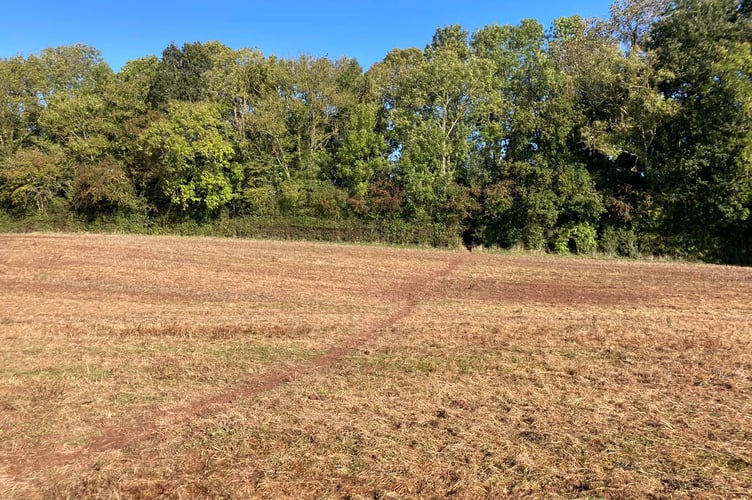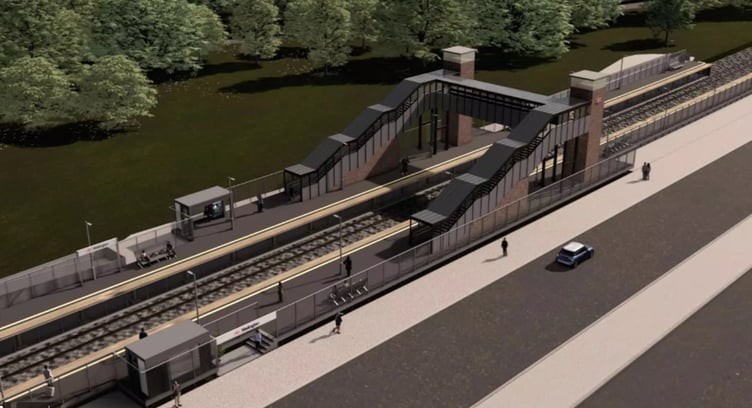TRAINS will run every hour at Wellington’s new railway station which has moved a step closer to development after plans for an access road, 200 homes and new commercial units have been approved.
Somerset Council has been working with Network Rail to restore rail services to Wellington, whose previous mainline station closed in the mid-1960s as part of the Beeching cuts.
Funding for the new railway station was provisionally secured in late-2023 following the cancellation of the High Speed 2 rail link between Birmingham and Manchester, with the Department for Transport (DfT) pledging to provide funding subject to a final business case.
To deliver the access road to the new station site, West of England Developments (Taunton) Ltd. put forward plans for a new development of up to 200 homes and commercial space off Nynehead Road.
How did we get to this point?
Wellington’s original railway station was located west of the B3187 Station Road, near what is now the KDC One Swallowfield factory.
Reopening the station on or near its original site was deemed impossible without forcibly relocating some of the town’s major employers.
Taunton Deane Borough Council set aside land off Nynehead Road for employment use as part of its Core Strategy, some of which will end up being occupied by the new station.
Somerset West and Taunton Council and Mid Devon District Council jointly secured £5m from the government in October 2021, which was used to carry out initial studies and assemble a business case to restore rail services to both Wellington and Cullompton.
The new station is expected to cost £15m and will be open by June 2026.

How many trains will call at the new station?
The station will be served solely by Great Western Railway (GWR) services, with CrossCounty indicating in late-March that its trains would not be calling there.
David Northey, a retired strategic planner with Network Rail, indicated at an event in May 2023 that the station would initially be served by trains every two hours as part of the GWR service between Exeter St. David’s and Cardiff Central.
But Network Rail officer Karen Williams told the committee: “The consent of this scheme will trigger the provision of the spine road and the transfer of land for the car park.
“The station will be served by one train per hour each way, with an extension of all services between Cardiff Central and Exeter St. David’s.”
Why do we need these new homes?
The delivery of the new station essentially comes in two parts: the station itself and its car park, and the access road connecting the station site to Nynehead Road and the wider road network.
Network Rail is spearheading the actual construction and delivery of the railway station, along with its car park near the southern platform.
These proposals are currently being designed, with a planning application expected to be submitted in the coming months.
The access road will be delivered through a new housing development, with West of England Developments (Taunton) Ltd. to extend the existing access near the Lidl store and build up to 200 new homes alongside it.
The developer also been aided in this regard by a new deal between Somerset Council and Wiveliscombe-based firm WCI, allowing developers to offset new homes by paying for upgrades to existing septic tanks.
To ensure the road can be delivered quickly, and therefore work on the actual station can begin, Somerset Council voted in late-January to potentially use up to £4.5m from other housing developments to pay for the road.

What other facilities will this development provide?
The development will provide a significant amount of commercial space near the railway station, along with contributions to local infrastructure.
Up to £305,000 will be provided to create a ‘station square’ area of public open space near the southern platform, which will serve to welcome passengers alighting at Wellington and allow for onward travel by bus, taxis or bicycle.
Wellington Town Council will be responsible for managing this site, which will include a unique piece of public art – the reclaimed top of the Wellington Monument, following the recent restoration of the iconic obelisk by the National Trust.
Town clerk Dave Farrow said: “This is a once-in-a-lifetime opportunity, and therefore we recognise there has to be some flexibility with regard to the usual developer contributions.”
The development will provide £573,000 towards local schools, along with £89,336 for expanding existing doctors’ surgeries.
On top of this, nearly £574,000 will be provided for walking and cycling connections to and from the station, providing a dedicated cycle lane along the spine road and a secondary link due south between the car park and the B3187 Taunton Road, linking up with existing lanes near the Longforth Farm estate.
A further £50,000 will be provided to help deliver the Grand Western Greenway, which will run to the north of the railway station and eventually provide a safe off-road cycle route between Wellington and Taunton, avoiding the busy A38.
A substantial amount of green space is also included within the plans, with 11 acres of new woodland to be planted north of the railway line and new public open space to the west.

How have local councillors reacted?
Jeremy Toye, who sits on Nynehead Parish Council, told the committee on Wednesday (May 1) that the village was in favour of the new station but had concerns over the access road’s design.
It is currently unclear whether the existing junction off Nynehead Road will remain in its current state or whether it will be redesigned, making the access road the main road leading off the Cades roundabout.
This latter option would require negotiations with Lidl over the use of land in their ownership to deliver the changes, departing from the plans when its new store was approved back in January 2022.
Mr Toye said: “If you add up the 200 houses, the employment site, the railway station, parking and everything else, then one access point seems a little short – and the junction’s existing position is dangerous.”
Councillor Gwilym Wren (whose Upper Tone division borders Wellington) concurred: “I’m disturbed that the change in road layout is not a done deal.”
Numerous other councillors expressed their support for the plans.
Councillor Caroline Ellis (Bishop’s Hull and Taunton West) added: “There is so much good about this – we could talk for hours about bats and the access, but at the end of the day we have to look at the overwhelming benefits of the scheme as a whole.”
After around 90 minutes’ debate, the committee voted to approve the plans by a significant margin.
Once legal agreements between the council and the developer have been signed, work on the access road could begin within a matter of months.


-between-Wellington-and-junction-26-of-t.jpeg?width=209&height=140&crop=209:145,smart&quality=75)


Comments
This article has no comments yet. Be the first to leave a comment.